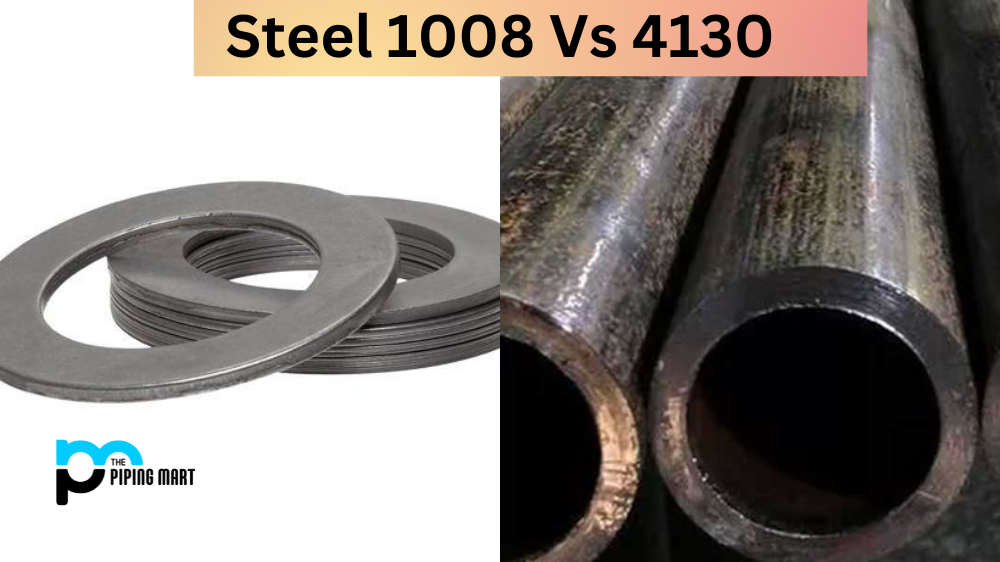Inconel and Incoloy are two metals that are frequently used in industrial applications. Both of these metals have a number of similarities, but there are also some critical differences between them. So, what exactly is the difference between Inconel and Incoloy? Let’s take a look at both of these metals to find out.
Today both Inconel and Incoloy are widely used in various spheres but still many of us don’t know the basic difference between the two. Both Inconel and Incoloy belong to the family of superalloys, also called high-performance alloys but both have their own distinct properties, and offer high resistance to corrosion and oxidation, in addition to mechanical strength at elevated temperatures.
When comparing the differences the most basic difference between them is their composition. Inconel is an alloy of nickel-chrome and usually contains over 50 percent nickel, whereas Incoloy, is an alloy of nickel-iron-chromium, and contains less than 50 percent nickel content.
Let us know more about the differences between the two alloys in detail.
What is Inconel?
Inconel, once heated, forms a thick yet stable oxide layer that protects its outer surface from an additional attack. This makes it the perfect alternative for high temperature and pressure applications, where steel and aluminum would succumb to thermal creep. Available in various grades, the Inconel alloys exhibit shifting characteristics with slight variations in their chemistry.
In its more basic type, typical applications would include the food industry and heat treated components. Once alloyed with different elements, however, additional strengthening and stiffening allow its use in the more stringent areas of the marine, aerospace, and chemical processing industries. Alloyed to its highest performance, Inconel then becomes the choice material of in the most crucial environments of turbine blades, rocket engines, and key nuclear industry components.
Characteristics of Inconel alloys are as follows:
- Good resistance to acids, such as sulfuric, phosphoric, nitric, and hydrochloric
- Almost completely free from chloride-induced stress corrosion cracking
- Outstanding mechanical properties at both extremely low and high temperatures
- Excellent pitting, crevice corrosion, and intercrystalline corrosion resistance
- High resistance to oxidation at elevated temperatures
Applications, where Inconel alloys are used, are as follows:
- Chemical and petrochemical processing
- Flare stacks on offshore oil platforms
- Gas turbines, rocket motors/engines, and spacecraft
- Pollution control equipment
- Nuclear reactors
What is Incoloy?
Incoloy, with its higher ferrous content and correspondingly lower cost, make it the ideal material in elevated temperature, but less critical, applications. A further feature is its relative ease of fabrication, employing the same machines and processes used for stainless steel.
Incoloy alloy also comes in a variety of grades, whose emphasis is more on resistance to aggressive forms of corrosion, particularly in aqueous environments. Whereas a basic form of Incoloy will find widespread general use, further alloying with enhancing elements provides added resistance to chemical and environmental corrosion, as well as physical deterioration, such as surface pitting and cracking.
Excellent resistance to seawater, brine, sour gas and high chloride environments make it a popular choice in the oil and gas industries. The most specialized Incoloy alloys, however, are widely used in the harshest chemical environments of all, involving among others, acids, wet scrubbing, nuclear fuel and the reactive atmospheres of furnaces.
Characteristics of Incoloy alloy are as follows:
- Excellent strength resistance in high-temperature settings
- Outstanding oxidation and carburization resistance in high-temperature settings
- Good creep-rupture strength
- Good corrosion resistance in aqueous environments
- Ease of fabrication
Applications, where Incoloy alloys are used, are as follows:
- carburizing equipment, heating-element sheathing, process piping, heat exchangers, nuclear steam-generator tubing,
- heat-treating equipment, chemical and petrochemical processing, power plants, industrial furnaces,
- oil, and gas well piping, nuclear fuel reprocessing, acid production, pickling equipment.
Inconel vs Incoloy – What’s the Difference
- Inconel is an austenitic nickel-chromium alloy that contains high levels of chromium and nickel.
- Incoloy is a nickel-iron-chromium alloy that contains high levels of chromium and nickel.
- Inconel is resistant to corrosion in both oxidizing and reducing environments.
- Incoloy is resistant to corrosion in both oxidizing and reducing environments.
- Inconel has high strength and can be used at high temperatures.
- Incoloy has high strength and can be used at high temperatures.
- Inconel is used in applications where resistance to corrosion and oxidation is required, such as chemical
- processing, aerospace, and power generation.
- Incoloy is used in applications where resistance to corrosion and oxidation is required, such as chemical processing, aerospace, and power generation.
Conclusion
In summary, both Inconel and Incoloy are alloys composed primarily of nickel with various elements added for additional strength and corrosion resistance. However, some key differences between the two metals make them suitable for different applications – specifically their respective heat resistance capabilities (Inconel up to 2200°F vs. Incoloy up to 2500°F) and their levels of corrosion resistance (Incoloy being superior). Depending on your needs you may find one metal more suitable than the other. Still, ultimately they both make great materials for a wide range of industrial applications due to their unique properties. As always, be sure to check with experts before choosing any material to get the best results possible!

Pipingmart is B2B portal specializes in industrial, metal and piping products. Also, share latest information and news related to products, materials and different types grades to help business dealing in this industry.




